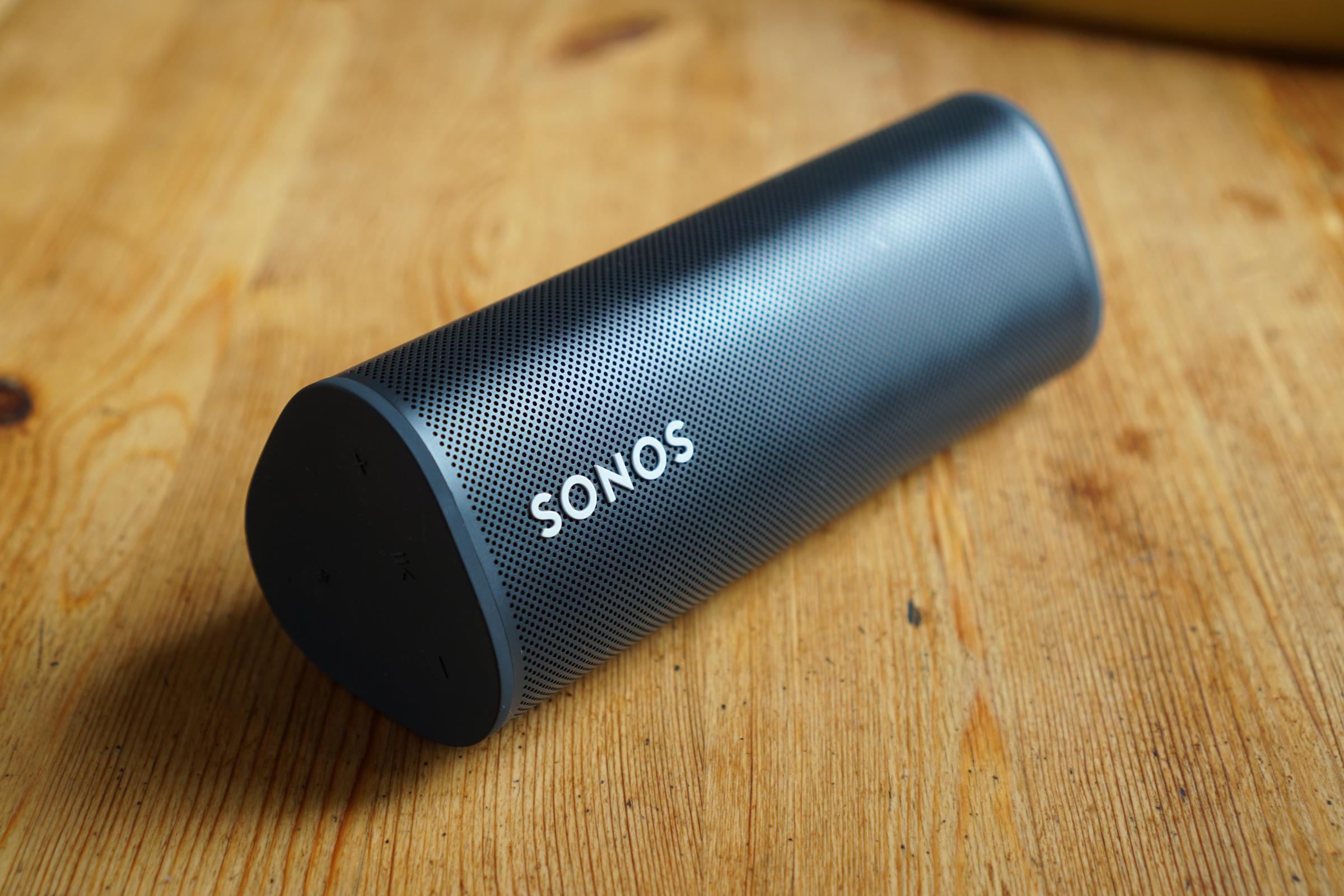
Summer is here and you’re probably ready to party, see your friends, and mostly get back to yucking it up responsibly outdoors. But as plenty of people aren’t comfortable venturing into the crowded world just yet, you’re still going to spend time indoors. Either way, you’ll want some tunes, and Sonos has made a speaker pretty well-suited for both environments.
While the Sonos Roam has a few shortcomings, it’s pretty impressive. But when traditional Bluetooth speakers have gotten pretty inexpensive, is it worth the hefty $169 price tag? That depends.
The Sonos Roam marks the second of Sonos’ portable lineup, following the (much) larger Move, which is the more home-oriented version of a Bluetooth speaker. The seamless in-home and outdoor capabilities of the Roam, in addition to its size, are what make it a great companion to any function in need of some music.
The curvy, triangular Bluetooth speaker is available in black or white, and fits with the Sonos aesthetic; it’s unobtrusive and designed to blend in. Its controls are pretty sparse, with buttons for playback control and voice assistant access, and inset into the oh-so-slightly indented rubber top, making me prefer using my phone to adjust it rather than touching the Roam itself. Its IP67 waterproof rating, which Sonos claims makes it “waterproof up to three feet for 30 minutes,” makes it a decent camping companion as well (though the external battery pack I used to recharge the Roam is what really kept the party going).
When you’re on the go, you can connect to the Roam using Bluetooth, and once you’re done outdoors, bring it inside to take advantage of all its tricks. Airplay 2 support means you can use it to play music anywhere in your home (with a wi-fi connection), connect two Roam speakers to form a stereo pair or group any Airplay-compatible speakers for whole home sound.

If you’re already part of the company’s ecosystem, that makes it a no brainer, especially with the wireless charger, which is not included. The lack of a pack-in wireless charger is a real downer. It really should be included with the Roam itself, like the one included with Sonos’ Move speaker, both to give the tiny gadget a more permanent spot for home playback and keep it topped off when you need to grab it and go. That (or a USB-C cable) turns it into a miniature voice assistant you can put anywhere in your house while staying prepped for any outdoor festivities. As for voice assistant compatibility, you can use Amazon’s Alexa or Google Assistant, but not Apple’s Siri.
While the Roam won’t replace the booming power of something like the stationary Sonos 1 speaker, it can shrink the connected speaker experience to fit on your tiny nightstand, or sit unobtrusive on a windowsill. It’s tasteful, easy on the eyes, unlike the more popular but eye-catching colors on competitors like the UE Boom speaker line. Many UE Boom speakers also feature voice control, wireless charging and the ability to create stereo pairs like the Roam, but they do not support Airplay.
How does it sound? Pretty good! At its highest volume things get a little muddy, and the bass, while decent, won’t rock your world. Still, it sounds quite crisp and gets loud enough for your backyard barbecue.

But boy, that battery life is hard to live with, and the power-related quirks irked me throughout my time with the speaker. Sonos claims a 10-hour battery life, but in my experience it lasted nearly eight hours, and was dead more often than not. This confused me until I realized the culprit was something decidedly basic. The Roam has a pesky habit of turning on when you plug it in, and its tiny indicator lights don’t really stand out when you’re in a hurry to use its charging cable on another device. If you forget to turn it off when charging or swapping the charge, it could be dead when you need it most.
As someone with a single stationary Sonos speaker, the addition of one I could move anywhere turns out to be a huge boon. And since you can use either Sonos’ grouping system or Airplay, that means HomePod users can take advantage of the experience as well. For Sonos users, it’s just a very small upgrade to their existing experience. Which is more useful than you think.
If you want to bite the bullet and check out the Roam, it’ll run you $169, a bit more than Logitech’s equally capable UE Boom 3 speaker. If you’ve got a Sonos or HomePod in your home, and want something that expands what you can do with music both inside and outside, then it’s worth it. For those just looking for a Bluetooth speaker? Skip it, and get something with some real bass.
More Must-Reads from TIME
- Donald Trump Is TIME's 2024 Person of the Year
- Why We Chose Trump as Person of the Year
- Is Intermittent Fasting Good or Bad for You?
- The 100 Must-Read Books of 2024
- The 20 Best Christmas TV Episodes
- Column: If Optimism Feels Ridiculous Now, Try Hope
- The Future of Climate Action Is Trade Policy
- Merle Bombardieri Is Helping People Make the Baby Decision
Write to Patrick Lucas Austin at patrick.austin@time.com